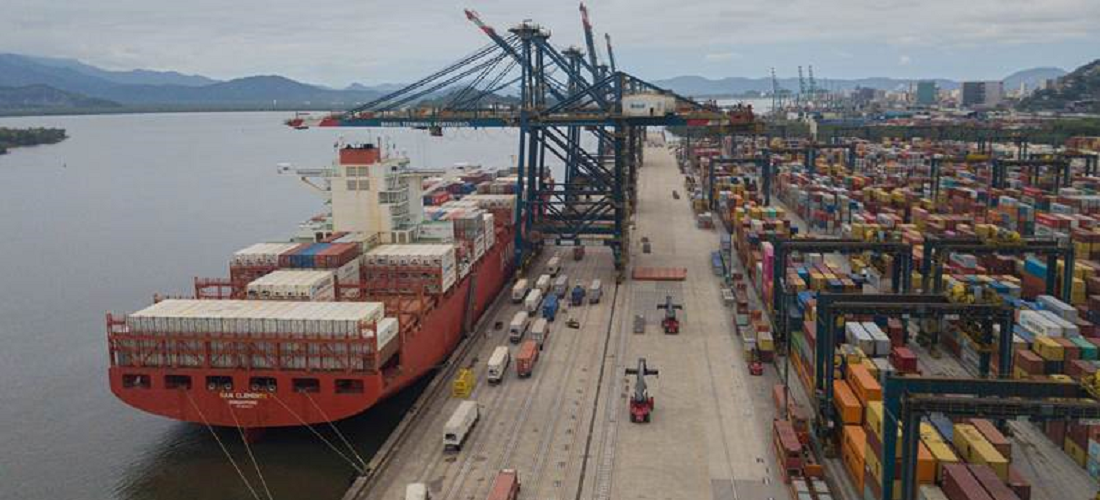
Port of Santos enact tariff readjustment of 13%
Dec, 28, 2021 Posted by Gabriel MalheirosWeek 202150
The Santos Port Authority (SPA), the company responsible for managing Brazil’s largest port, has been granted permission by the Brazilian National Transportation Waterway Agency (Antaq) to enact a tariff readjustment of 13.2%. The adjustment will come into force between February and April 2022, depending on the tariff.
Theoretically, this is the last adjustment the port authority is allowed to make before its privatization, which will happen in the last quarter of next year if the intentions of the Bolsonaro administration come into fruition.
SPA expects to earn a net income of R$ 308 million this year – a record in the history of the port. The figure is 52% higher than last year and points to the consolidation of the positive results yielded before the privatization. In 2018, the state-owned company lost R$ 469 million.
The readjustment in prices charged to shipowners and port terminal operators was authorized by Antaq this month. On December 24th, the agency established the exact dates on which the new rates will proceed to be charged as per the request of the SPA.
Waterway access tariffs, which represent almost 70% of the port authority’s revenues as of right now, will increase 15% starting from February 1st. Other prices will change on April 1st. Fees for the use of terrestrial infrastructure, which is equivalent to around 20% of total revenues, will rise by 27%. Two other tables refer to berthing rates (1% readjustment) and general services (a 16% reduction).
The readjustment effects will be felt differently by each type of cargo. This is the first increase enacted since Antaq’s Normative Resolution (RN) No. 32 of 2019 came into force. The resolution changed the way tariffs are collected.
Previously, tariffs were determined based on the actual tonnage carried by ships. Now, the amount charged will be determined based on the vessel’s total capacity – regardless of whether empty or full. The new reasoning is that the port infrastructure is equally used in both circumstances. As per consequence, ships carrying containers or general cargoes that leave unused space will pay more. On the other hand, ships carrying grains or ores (which are almost always fully loaded) should notice some relief.
We can still see, at some point in 2022, a new tariff readjustment. Notwithstanding, it would be of a lesser degree. In case another readjustment occurs, it would be in response to the auction of the port terminals scheduled for the next couple of months, which – in turn – would yield an additional invoice big enough to reduce the tariff chart without negatively impacting SPA’s financial balance.
The government plans to bid at least four new terminals: the STS 10 (container terminal), STS 11 (vegetable bulk), STS 53 (fertilizers), and the re-bidding of STS 08 (liquids).
Source: Valor Econômico
To read the full original article visit the link:
https://valor.globo.com/empresas/noticia/2021/12/28/porto-de-santos-reajusta-tarifas-em-13.ghtml
-
Other Cargo
Jun, 10, 2022
0
Uruguay dairy exports climb 49% YoY
-
Ports and Terminals
Jan, 28, 2021
0
Santos Brasil completes modernization of Tecon Vila do Conde
-
Ports and Terminals
Mar, 23, 2023
0
Largest Ro-Ro capacity-wise arrives at Brazil’s Paranagua terminal
-
Shipping
Feb, 04, 2021
0
MSC continues expanding fleet with pre-used vessels

